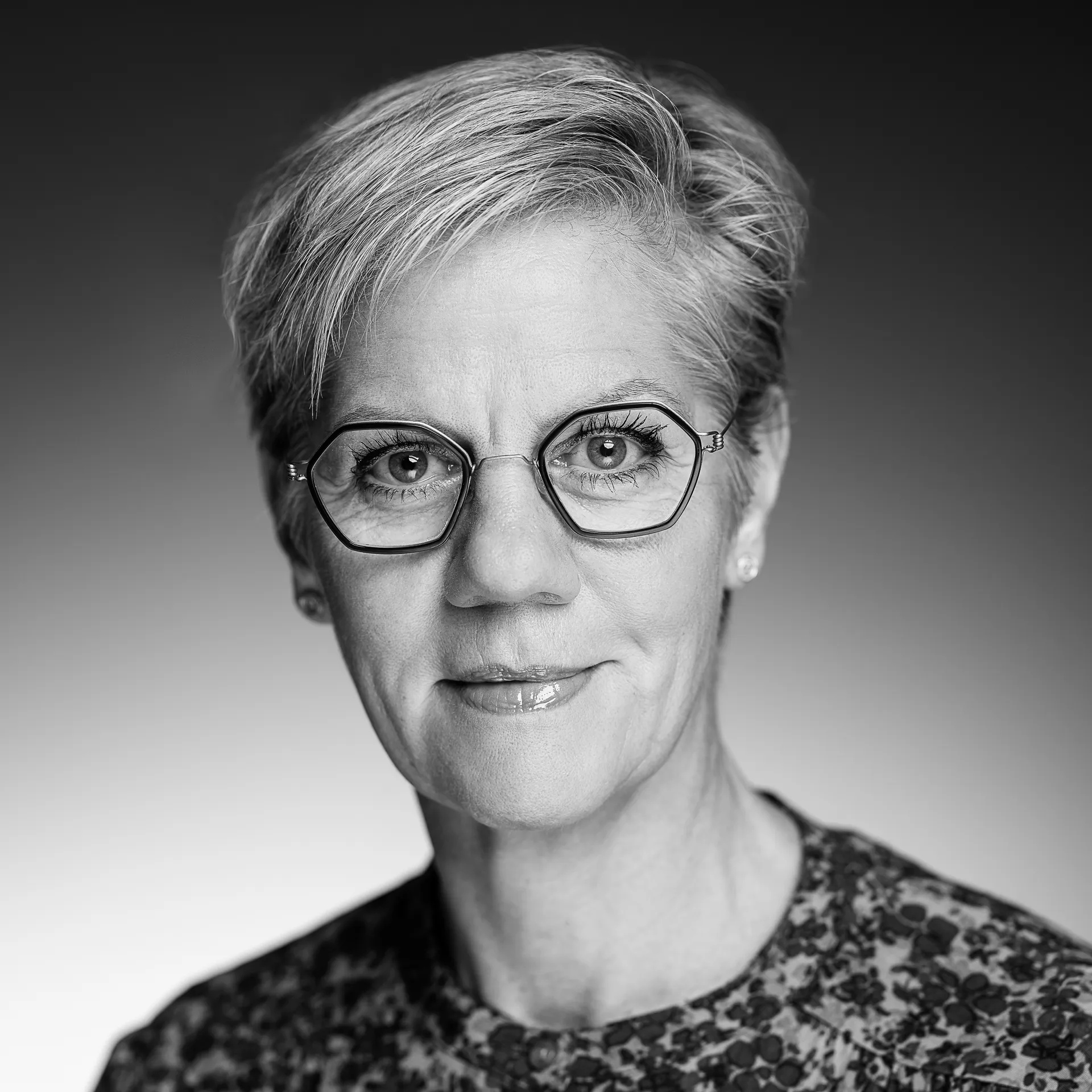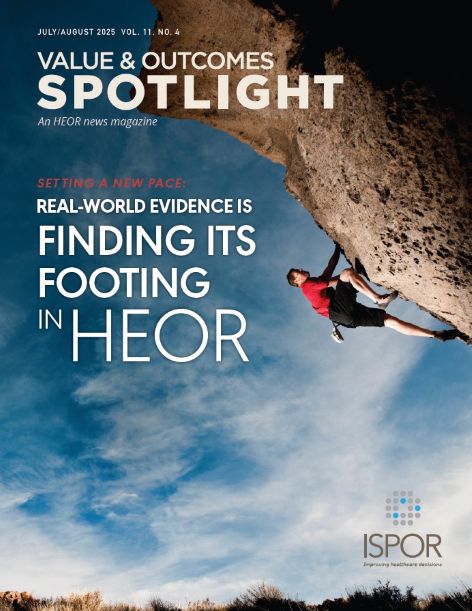Accelerating Patient Access to Innovation
Value & Outcomes Spotlight has partnered with PharmaBoardroom to share content that is relevant to the global HEOR community. This interview was originally published on the PharmaBoardroom website in June 2025. For more information and other stories like this, visit PharmaBoardroom.

Interview With Birgitte Klindt Poulsen, Chair of the Danish Medicines Council
Since stepping into the role of Chair of the Danish Medicines Council in early 2025, Birgitte Klindt Poulsen has been navigating the delicate balance between accelerating patient access to innovation and maintaining the rigor of independent, evidence-based evaluation. In this interview, she shares how the Council is embracing real-world evidence, advancing European collaboration, and preparing for the growing complexity of personalized and advanced therapies.
“The mandate of the Council is one I consider both essential and increasingly complex. At its core, our mission is to ensure that Danish patients can access innovative treatments swiftly, but always based on independent, evidence-based evaluations and within the boundaries of cost-effectiveness.”— Birgitte Klindt Poulsen
PharmaBoardroom: What have been your early reflections since stepping into the role of Chair of the Danish Medicines Council, and how are you shaping its strategic direction?
Birgitte Klindt Poulsen: I officially assumed the role of Chair of the Danish Medicines Council in February of this year, following a long-standing involvement with the organization. I joined as a regular member in January 2017 and most recently served as Vice-Chair, which provided a strong basis for stepping into this position. That continuity has been invaluable as it has allowed me to approach the Chairmanship not as a starting point, but as a continuation of a journey already deeply rooted in the Council’s values and operations.
The mandate of the Council is one I consider both essential and increasingly complex. At its core, our mission is to ensure that Danish patients can access innovative treatments swiftly, but always based on independent, evidence-based evaluations and within the boundaries of cost-effectiveness. The real challenge lies in maintaining this balance, between acting with the necessary speed to serve patients and applying the analytical depth required to safeguard both clinical and economic soundness. That equilibrium is foundational to our credibility and to the trust placed in us by stakeholders across the healthcare ecosystem.
One of my immediate focuses has been contributing to the formulation of our 2025-2027 strategy, a process that I found particularly meaningful given the weight of the decisions that lie ahead. The strategy reaffirms our role in helping the healthcare system navigate increasingly urgent prioritization demands. Although Denmark is often regarded as a country with strong public health infrastructure, our resources, like those of any system, are finite. We must therefore take seriously our responsibility to guide resource allocation in a way that delivers the greatest value across disease areas and care levels. As a Council, we see ourselves not merely as assessors of medicines, but as contributors to a more equitable and sustainable model of healthcare delivery, one that serves patients both efficiently and fairly.
PB: How does the 2025–2027 strategy reinforce the Council’s mission, and what new priorities are being introduced?
BKP: Our newly launched 2025-2027 strategy reaffirms our commitment to providing timely, evidence-based recommendations for new medicines, balancing the need for rapid patient access with the rigor of independent clinical and economic evaluation. While speed is important, decisions must remain firmly grounded in a thorough assessment of efficacy, safety, and cost-effectiveness. A central priority is strengthening our health technology assessment (HTA) capabilities, both domestically and through our active role in the European Union’s HTA framework. As Denmark assumes the EU presidency, we are committed to deepening collaboration on joint clinical assessments while continuing to address national-level policy, organizational, and economic factors.
As Denmark assumes the EU presidency, we are committed to deepening collaboration on joint clinical assessments while continuing to address national-level policy, organizational, and economic factors.
Equally important is the need to enhance post-recommendation follow-up. Clinical trial populations rarely mirror Danish patients, so we are investing in more data-driven mechanisms to ensure that our decisions translate into real-world value. Finally, transparency remains essential. We aim to be a clearer, more visible voice in public discussions around prioritization, ensuring that our decisions, and the reasoning behind them, are accessible and trusted by all stakeholders.
PB: In what ways is the Council advancing the integration of real-world evidence into its decision-making processes?
BKP: Denmark possesses a solid foundation for the integration of real-world evidence (RWE), with high-quality healthcare data and strong systems for patient follow-up. Yet despite these advantages, we recognize that our use of RWE remains limited. Unlocking its full potential will require a more concerted effort to strengthen collaboration, not only among domestic clinical and data stakeholders, but also across the Nordic region and the broader European landscape. This objective is already embedded within our current strategic agenda and will be a key area of focus in the coming year.
One of the primary challenges lies in scale. As a relatively small country, Denmark often lacks the patient numbers required to produce robust, timely evidence in areas such as rare diseases or narrowly defined indications. With many of today’s new therapies targeting increasingly specific populations, it becomes clear that national data alone are often insufficient. To address this, we are actively pursuing international collaboration to build more comprehensive datasets. In doing so, we aim to ensure that our assessments not only remain methodologically sound but also reflect the realities of clinical practice, ultimately supporting more informed and effective healthcare decision making.
Earlier access to shared data and closer methodological alignment across member states will support more robust evaluations, while still allowing national authorities to address local economic, organizational, and policy considerations.
PB: How is the EU HTA regulation influencing the Danish Medicines Council’s work, and what contribution can Denmark make at the European level?
BKP: The implementation of the EU HTA regulation is already having a tangible impact on the work of the Danish Medicines Council. Our secretariat has been actively engaged from the outset and is currently participating in joint clinical assessments for new medicines. From an early stage, we recognized the strategic importance of contributing to this evolving framework and made it a priority to ensure Denmark plays an active role in shaping its direction.
Looking ahead, we see this integration as an opportunity to improve both the efficiency and quality of our assessments. Earlier access to shared data and closer methodological alignment across member states will support more robust evaluations, while still allowing national authorities to address local economic, organizational, and policy considerations. The goal is not to replace national assessments, but to enhance them through collaboration.
With Denmark now assuming the EU presidency in this area, we are well positioned to share our experience and contribute constructively. Our approach ensures that recommendations are not only evidence-based but also implementable in day-to-day clinical practice. The involvement of those directly delivering and receiving care is essential to making our work relevant and usable. Ultimately, our contribution at the European level must remain rooted in that same principle: evaluations that are rigorous, transparent, and able to support meaningful outcomes across diverse healthcare systems.

